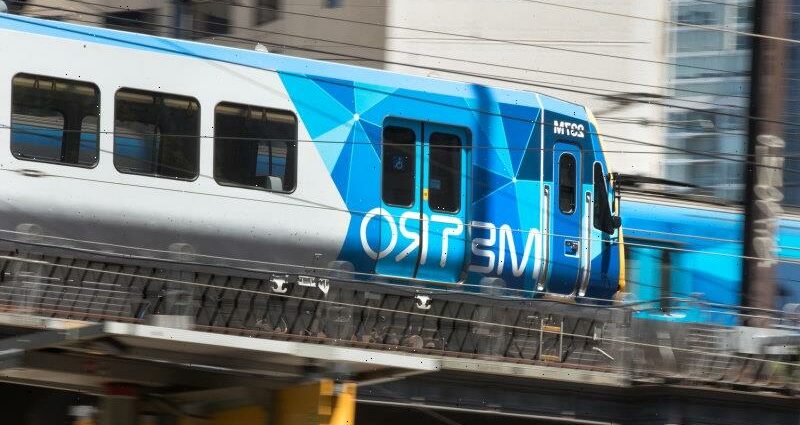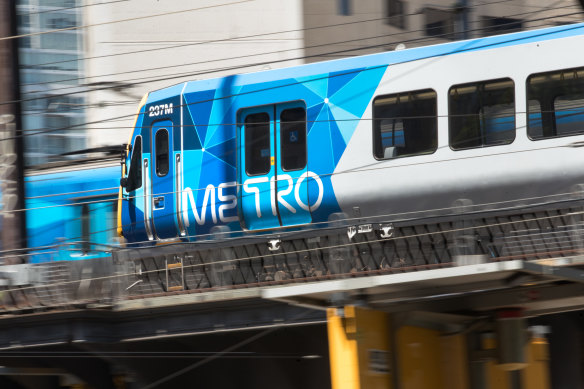It turns out, as some commuters have long suspected, that our city’s suburban train network is a tale of two halves: the haves and the have-nots.
There is likely to be a timetable tipping point at which some would-be train travellers opt out.Credit:Simon Schluter
Depending on where you live and what time of day you need to travel, there can be a vast difference in how long you are likely to wait for the next service, especially outside peak hour and on weekends. Travel in and out of Caulfield, for example, and life’s a breeze, with trains running almost continuously in peak hour and with reassuring regularity at quieter times of the day, 10 minutes apart, if that. You wouldn’t even bother checking the timetable before heading to the station.
Miss your off-peak train out of Sunshine, though, and you could be in for a 20-minute wait for the next Metro service, even though it’s our sixth-busiest suburban station overall in terms of passenger numbers, handling only marginally fewer than Caulfield (fourth busiest suburban), according to data released last week by the Department of Transport and Planning.
Indeed, it is a curiosity of the network that some of our most-patronised suburban stations are among the “have-nots” in terms of train frequency, particularly off-peak in the north and west. Essendon, for example, has more passengers than Frankston but typically also half the regularity of services outside peak hour, according to transport reporter Patrick Hatch. The data also show up pressures in the western corridor with three of its stations – Tarneit, Wyndham Vale and Melton – now among the top 25 per cent of Melbourne’s busiest, turbocharged by population growth in the region and still reliant on V/Line trains.
There is likely to be a timetable tipping point at which some would-be train travellers opt out. Services up to 10-15 minutes apart mean you still have a reasonably short wait time even if you just miss a train. But, says Public Transport Users Association spokesman Daniel Bowen: “If they see the train only runs every 30 or 40 minutes, they’re likely to just jump in the car and drive.” Which is not a desirable outcome for anybody, given traffic on freeways and arterial roads is now barely a shade below pre-pandemic 2019 levels despite many more would-be commuters working from home for at least part of the week.
And if you don’t have access to a car at all? Make sure you bring a good book, writes commentator Tim Forster, whose recent visit saw him consider the efficacy of our city’s public transport network. “The best thing to say about my car-free month in Melbourne is that it gave me plenty of time for my holiday reading,” he says. “From my experience, anyone hoping to catch a train home from the CBD after hours can expect a decidedly non-world-class wait of up to 30 minutes.”
Once the glamorous Metro Tunnel and its new stations are up and running, freeing capacity in the City Loop among other improvements, the system should improve somewhat overall. Electrification of regional tracks, a Myki reboot and other relatively small wins will also help in time. The suburban rail loop, too, will eventually make a difference, albeit first to the lives of commuters in the already well-served south-east. Meantime, what we clearly need most right now is a tangible increase in the sheer number of services across the network to feed those busy stations crying out for more frequency.
Patrick Elligett sends an exclusive newsletter to subscribers each week. Sign up to receive his Note from the Editor.
Most Viewed in National
Source: Read Full Article
-
NHS boss accused of ignoring Lucy Letby warnings says she was duped
-
'I'd promised Dyanne I'd do anything to relieve her pain… So I did'
-
Another election, another campaign to cancel a project
-
Putin’s announcement leads to a sharp rise in flights leaving Moscow
-
Nigerian brothers who were by Jussie Smollett recreate 'attack'


